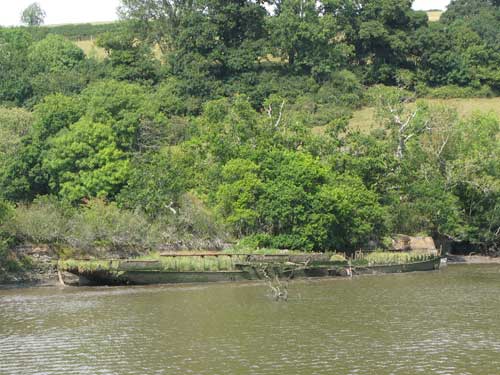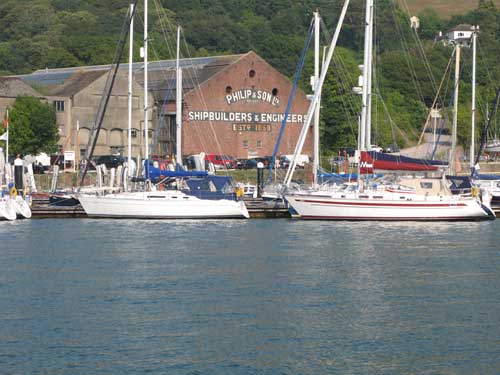

An article Dartmouth Hospital Ships by Dr Giles Keane can be found at Dartmouth Archives.http://www.dartmouth-history.org.uk/dartmouth/main.asp
The reference is DHRG103000. Go to Search and at Key 1 enter 103000
In 1868 an outbbreak of smallpox was foisted on the town by a visiting ship. The same thing happened in 1870, and gave rise to a report recommending a hospital be built. Eventually in 1887 Dartmouth College Hospital opened but even then it didn't have facilities for infectious diseases. Plans for an isolation hospital had been blocked by Sir Henry Seale for being too near his residence. So in 1893 an old paddle steamer–The Mayfly, was bought in Liverpool for £700, plus £500 for fitting it out as a hospital ship to accommodate 25 patients. She was moored opposite Dartmouth near the Higher Ferry.
The patients came mainly from visiting boats and whenever The Mayfly had a contagious occupant they flew a yellow flag. No one was allowed on or off the boat without medical approval. But Mayfly was little used and by 1906 had deteriorated; she ceased to be seaworthy. To continue in use she would have to be beached and her inside cemented. This was done. In 1909 she was moved to a new mooring site in Old Mill Creek. But she continued to deteriorate. Although it was recognised a new hospital ship was needed the outbreak of World War I put a stop to it proceeding. In November 1916 Mayfly broke adrift in a gale and had to be rescued. This would have been around the time the village of Hall Sands was virtually washed away, leaving just one house standing (where Miss Prettijohn lived).
After the war the medical officer declare the boat not fit habitation and finally in December 1923 a replacement was purchased and Mayfly sold. So the first Kingswear Castle took on its new role but the authorities were still unhappy using a boat and in January 1927 she was put up for sale. No offers. Dumped; as you can see above. Still there.
Old Kingswear's engine was transferred to this Kingswear Castle, and we are now passing by the yard in Dartmouth where she was built – Philip & Son. PS Totnes Castle was also built here. But the first Kingswear and Compton both came from Cox & Co. in Falmouth, who also built the engines.
I'm still beside the hatch looking down into the engine room, and eavesdropping. "She has the last working engine of its size. The Waverley on the Clyde is the same type but much bigger. The design of the engine - an inclined compound - goes back into the 1850s. Kingswear's a tiny engine. Imagine what one must have been like on Brunel's Great Eastern"
That engine's a miracle. Fire and water made into controlled power. I then look back to Dartmouth where steam power was born. Yes, really. It all began over there when Thomas Newcomen designed an engine for pumping out unwanted water in the tin mines of Cornwall and the coal mines of the Midlands. An expert on the history of steam power said this:
"No single man was father of the steam engine, no single civilisation either. Yet no one comes nearer deserving the title than Thomas Newcomen."
We've come below decks and are queueing in the forward saloon for complimentary cups of tea . Everyone's enjoying themselves. A mass of steam is billowing out of the catering area. Something is wrong with the tea urn. An engineer is summoned, tinkers, and the steam subsides. I think I hear this is an original part of the boat taking water from steam engine for our cuppas. But there's no time for confirmation for another conversation catches my attention. I hear the words Compton Castle. The lady nearby is talking to her friend. "Yes it was just like that. I used to work on Compton when I was a child; my uncle Cyril was the skipper. I made the tea in an urn just like that. The first thing we had to do when we came aboard was fill it. And we did ice creams. Such fun, and I was paid too "
Back on deck drinking our teas, our excursion is coming to an end. We'll soon be back at Dartmouth. Then we'll set off for Truro, maybe not straight away; there'll be time for an amble round the town.